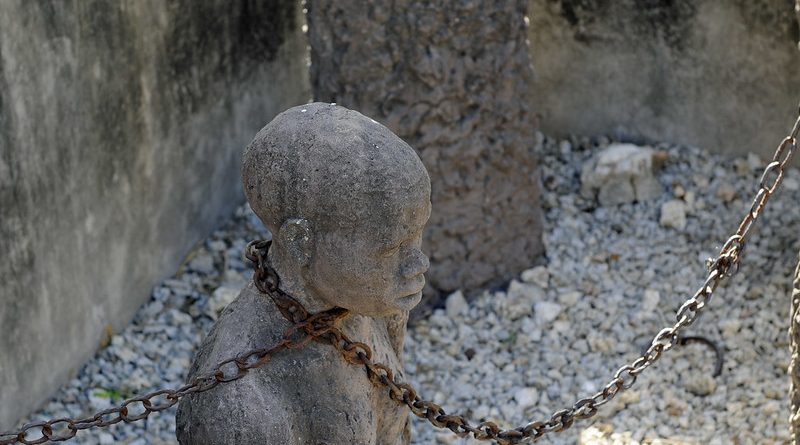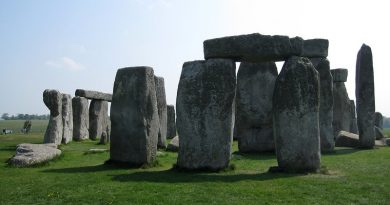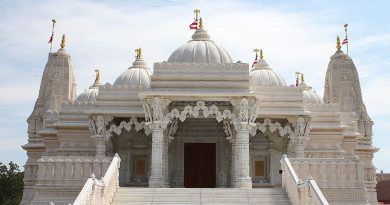The Blood of a Nation of Slaves in Stone Town
History Facts
Where: Centred in Stone Town, Zanzibar Island, East Africa
When: From 17th century to 1918
What happened: Sacrifice and bloody sacrilege of thousands of slaves, captured from rural East Africa and brought to Zanzibar to face certain death or torture
Go there for: Take a tour of the slave chambers, Livingstone’s house and the Cathedral Church of Christ
Zanzibar is ninety eight percent Moslem, a legacy of the island’s Arab influence, but the Cathedral Church of Christ in Stone Town is a memorial to the work of Christian anti-slavers. Tanzania suffered more heavily at the hands of the Arab-dominated slave trade than any other East African country and Zanzibar town is stained with the blood of a nation of slaves.
History
British anti-slavers like Dr. Livingstone felt it their Christian duty to oppose the trade. He observed the horrific and inhuman treaty of slaves at first hand whilst in Zanzibar, and when he got back to England he appealed there and urged the group called UMCA to begin the university mission to send volunteers to Africa. The crucifix at the Cathedral Church of Christ is made from the tree under which Dr. Livingstone’s heart is buried. The altar was built on the site of the auction block, and the circle marks the point where slaves were tied to a tree and beaten.
Nearby are the slave chambers. The tours are free but its advisable to give a donation. This is a terrible place where the slaves were kept before they were taken to the market, and the site of one of the greatest human atrocities ever, lasting a staggering one thousand years throughout modern history. The Arabic slave driver would take over a hundred women and children and pack them like sardines into a tiny room. Most of them would die because of suffocation, it is thought than only 6% of slaves survived from capture to market. Ironically, the slave traders of those times said if a slave could survive these conditions they are strong and in command of a high price, but most of the slaves became weak as a result of the lethal conditions and died later.
Close by at the House of Wonders, a former Sultan’s palace, under every column a slave was sacrificed.
Fate of a slave
After being captured, the Arab slave raider would put the African slave’s head in long chains of 300 people or more and walk them as far as Zaire carrying ivory. If you tired on the way to market you broke the calibants, so the slave drivers would behead anyone who fell.
The slave trade was in full swing before the arrival of Europeans, driven by the sultanates of the Middle East who were trading in slaves for over one thousand years, transporting African slaves across the Indian Ocean to the Persian Gulf and Asia. The slaves served different purposes, from becoming porters of the ivory trade, labourers on clove plantations, to women sold as sex slaves. The early Arab dealers were small scale and sailed on dhows ships transporting less than 100 slaves at a time.
The Europeans began operations in the 17th century when their settlement on the Mascarene Islands increased demand for labour. At the height of the trade around 15,000 slaves were exported annually from Zanzibar, although many thousands more were sold throughout Africa and millions died on the way. Slavery caused chaos across East Africa, with people fleeing their land from slave raiders and violence spread throughout the region. The need to “pacify” the region was the main justification for the European invasion of East Africa.
In 1822, the Omani Arabs signed a treaty to criminalize selling slaves to Christians. Despite British diplomatic relations, the Arabs largely ignored the terms of the treaty and the trade was to continue in private for another hundred years. Caravans would travel from Bagamoyo either buying slaves or simply capturing prisoners along the way. Bagamoyo literally meant “lay down your heart” because it was here that the slaves would give up any chance of finding freedom in their lifetime. Being sold to African armies or European plantations in the Indian Ocean was not a Zanzibar slave’s worst fate; if there was a glut in demand for slaves the Doe Tribe’s in the area would eat the “excess supplies”.
In 1873, under British threat, Zanzibar was forced to end the sea-borne slave trade and the market in Zanzibar was closed, replaced by the Cathedral Church of Christ. However, the trade was never completely stopped until the British took over Zanzibar after World War I. Conditions changed little for these slaves, they were simply used as low wage labour in the plantations, but at least they avoided a cruel and barbaric death.
More information:
The Slave Trade
History of the Zanzibar Slave Trade.
The East African Slave Trade
BBC’s story of Africa series with audio excerpts from a dramatisation.
Main image: Stone Town Slave Trade, Zanzibar, Son of Groucho, Flickr Creative Commons
By Susi O’Neill




